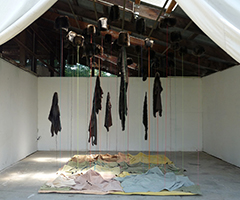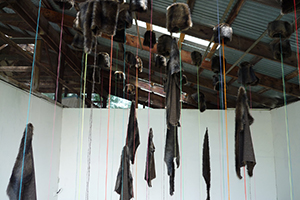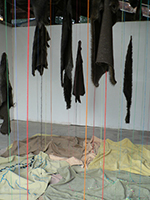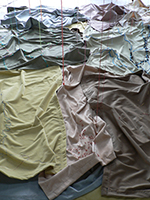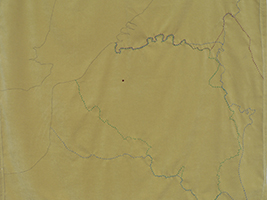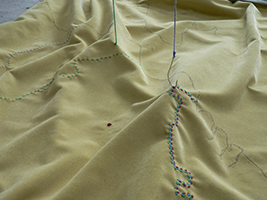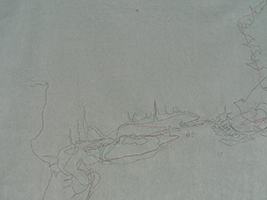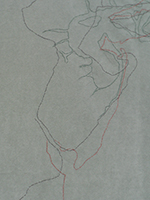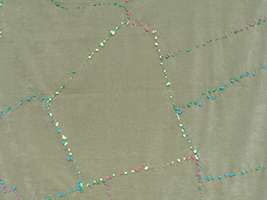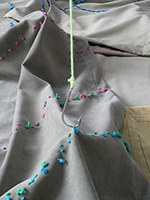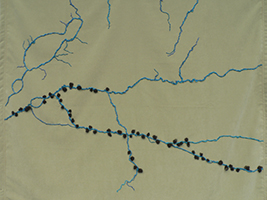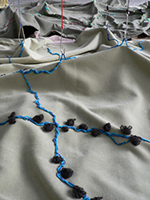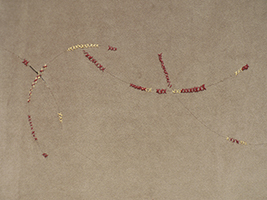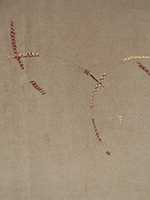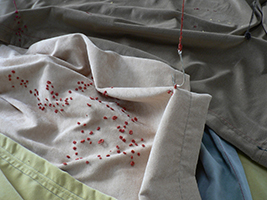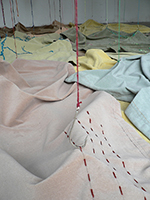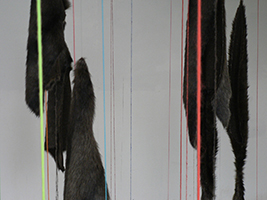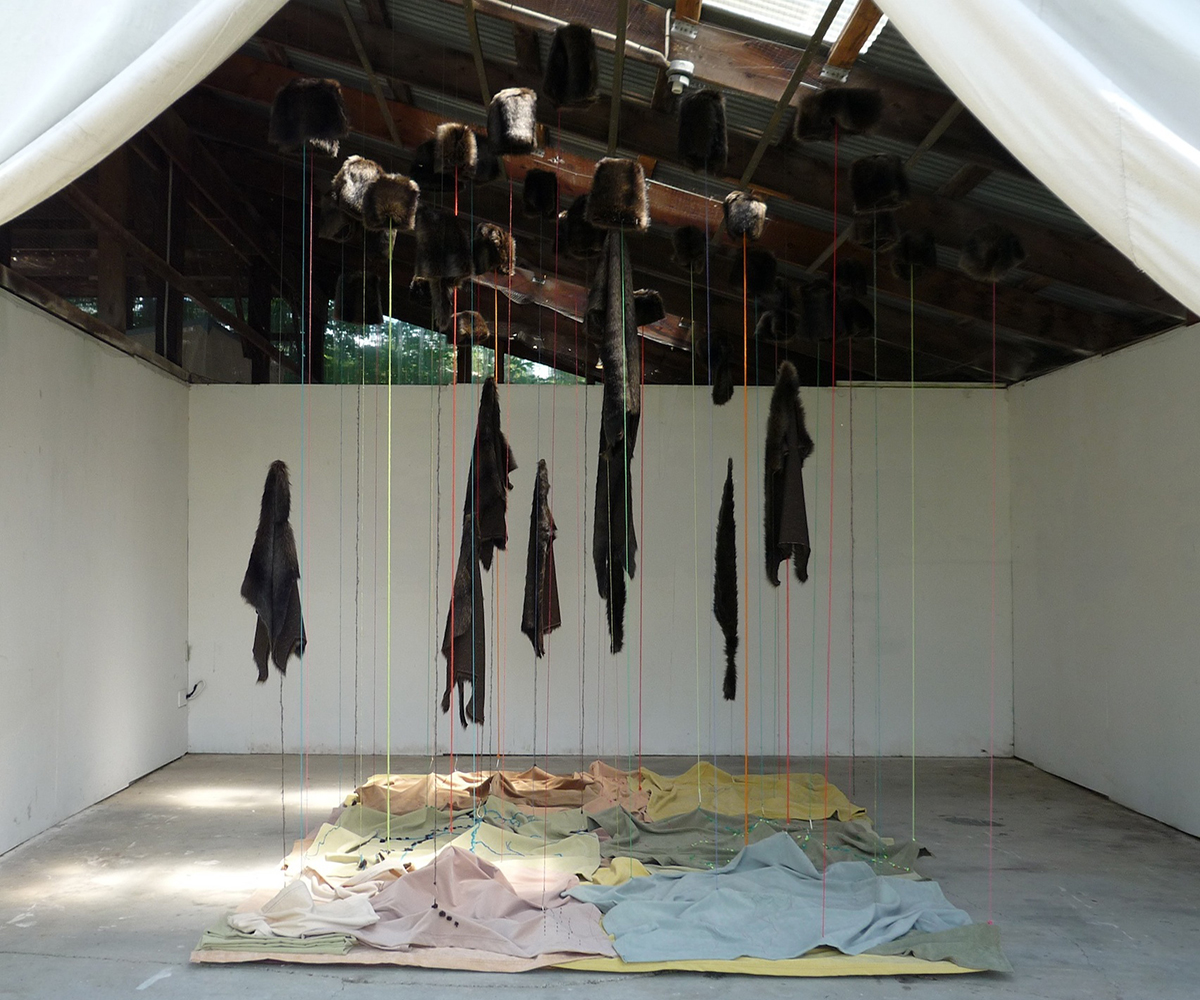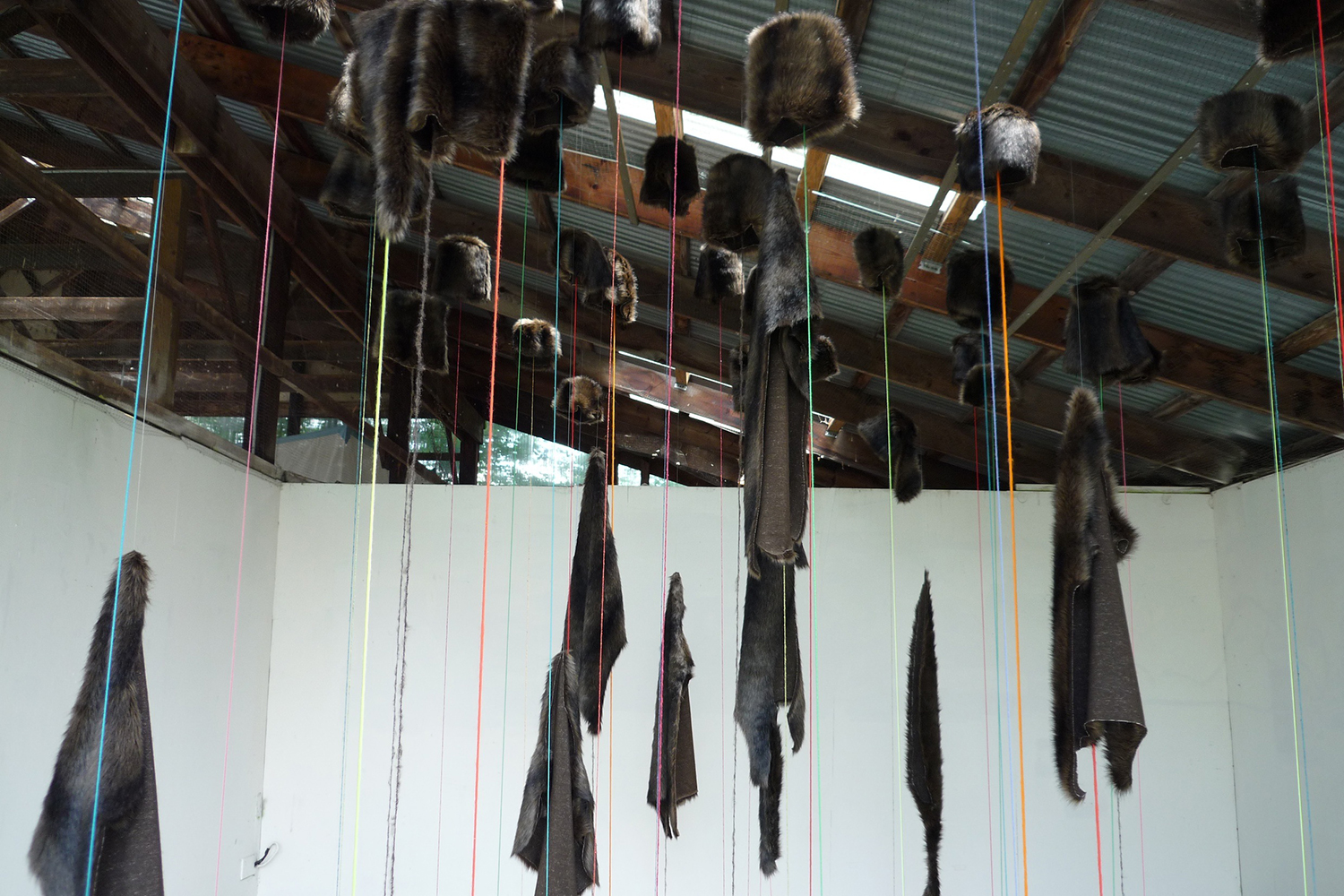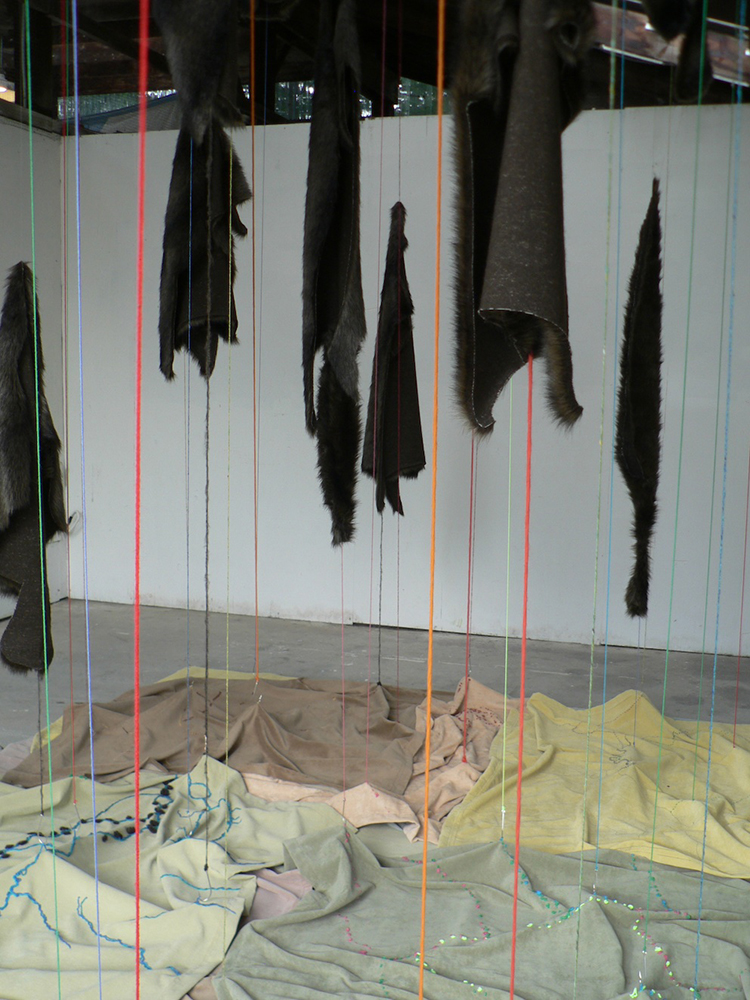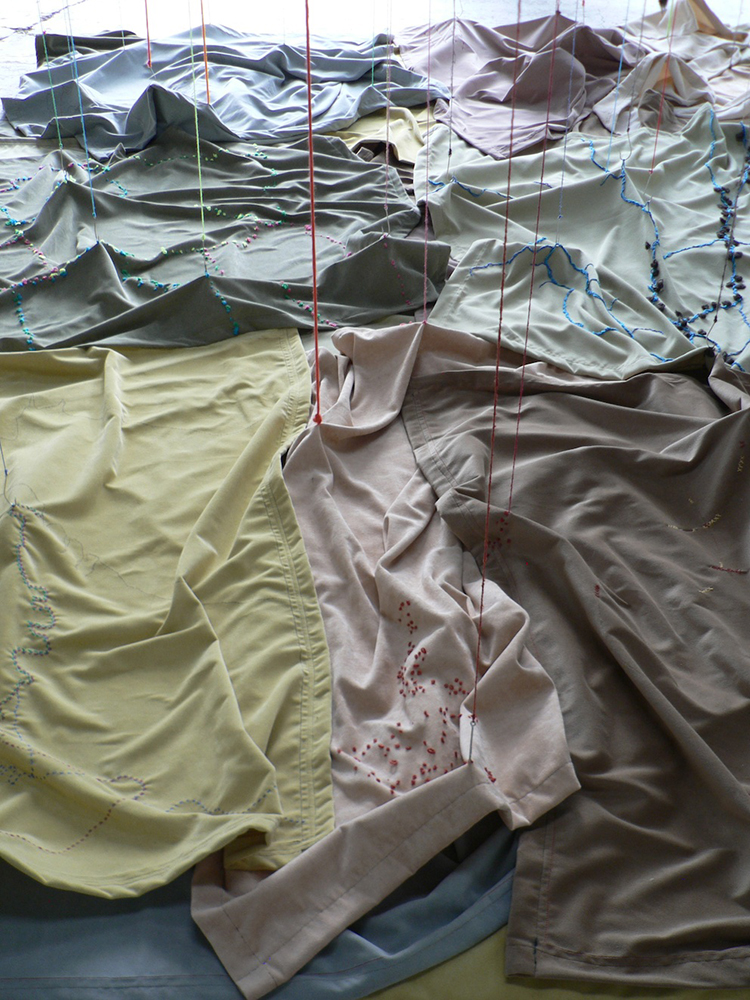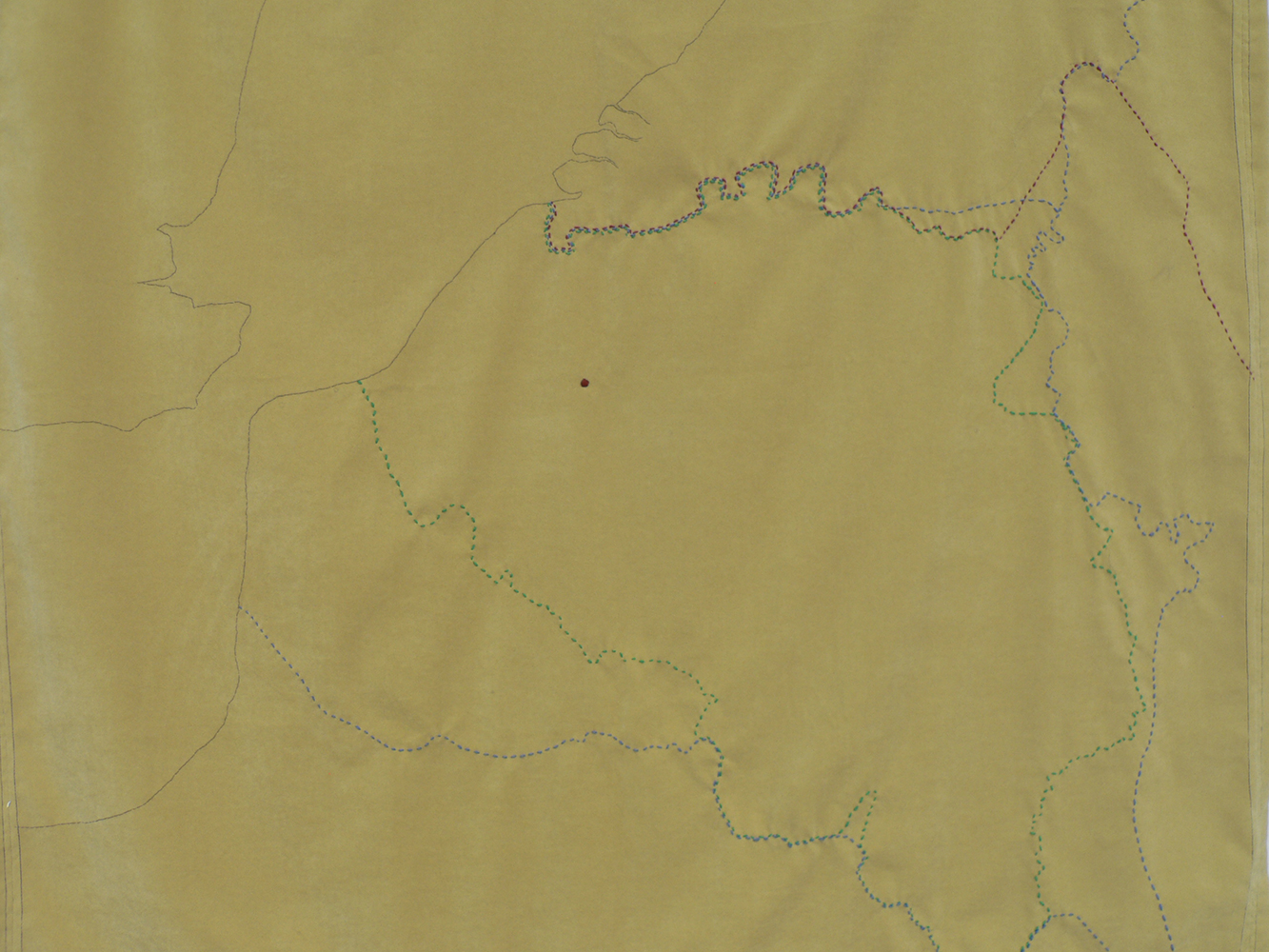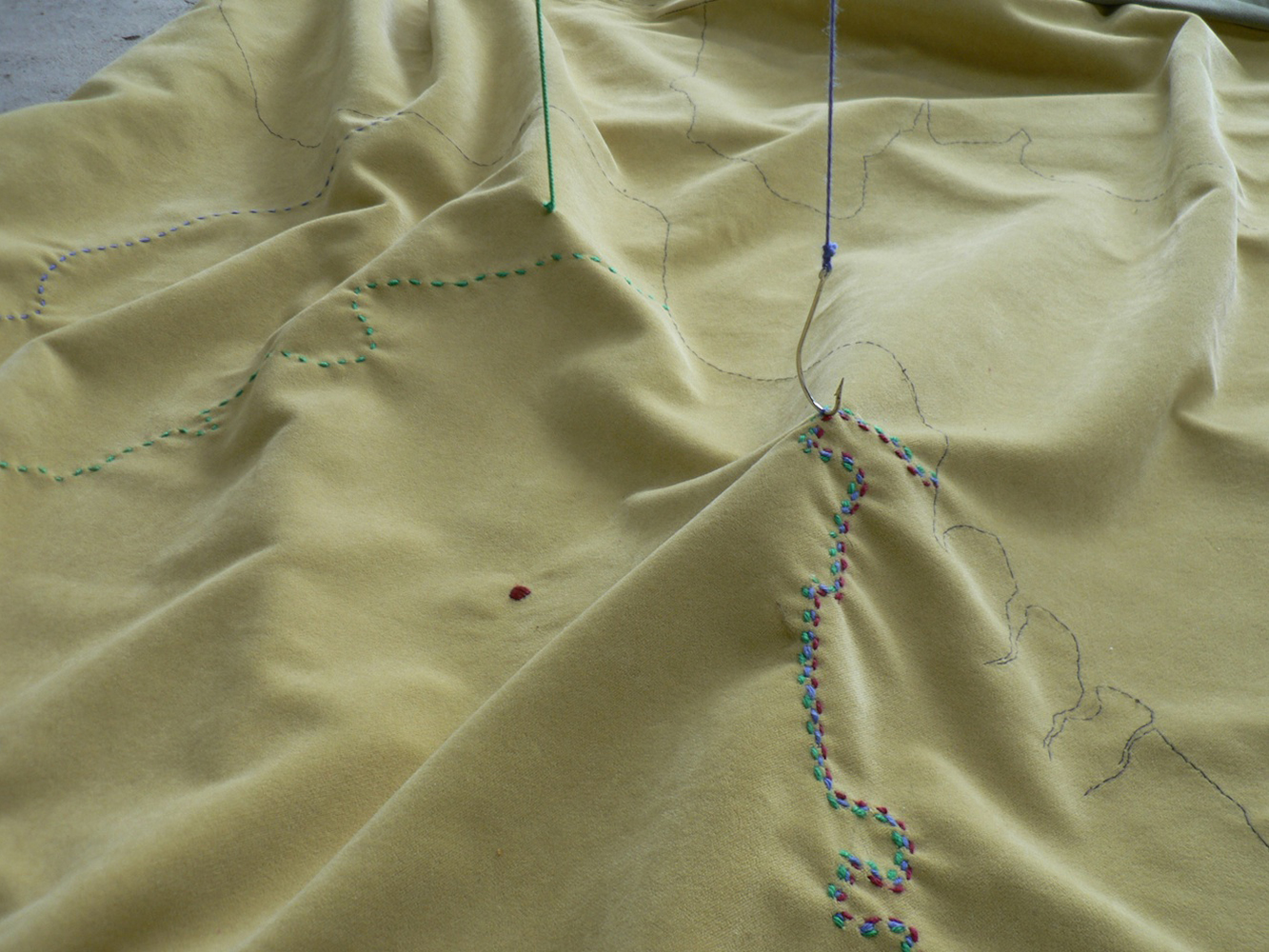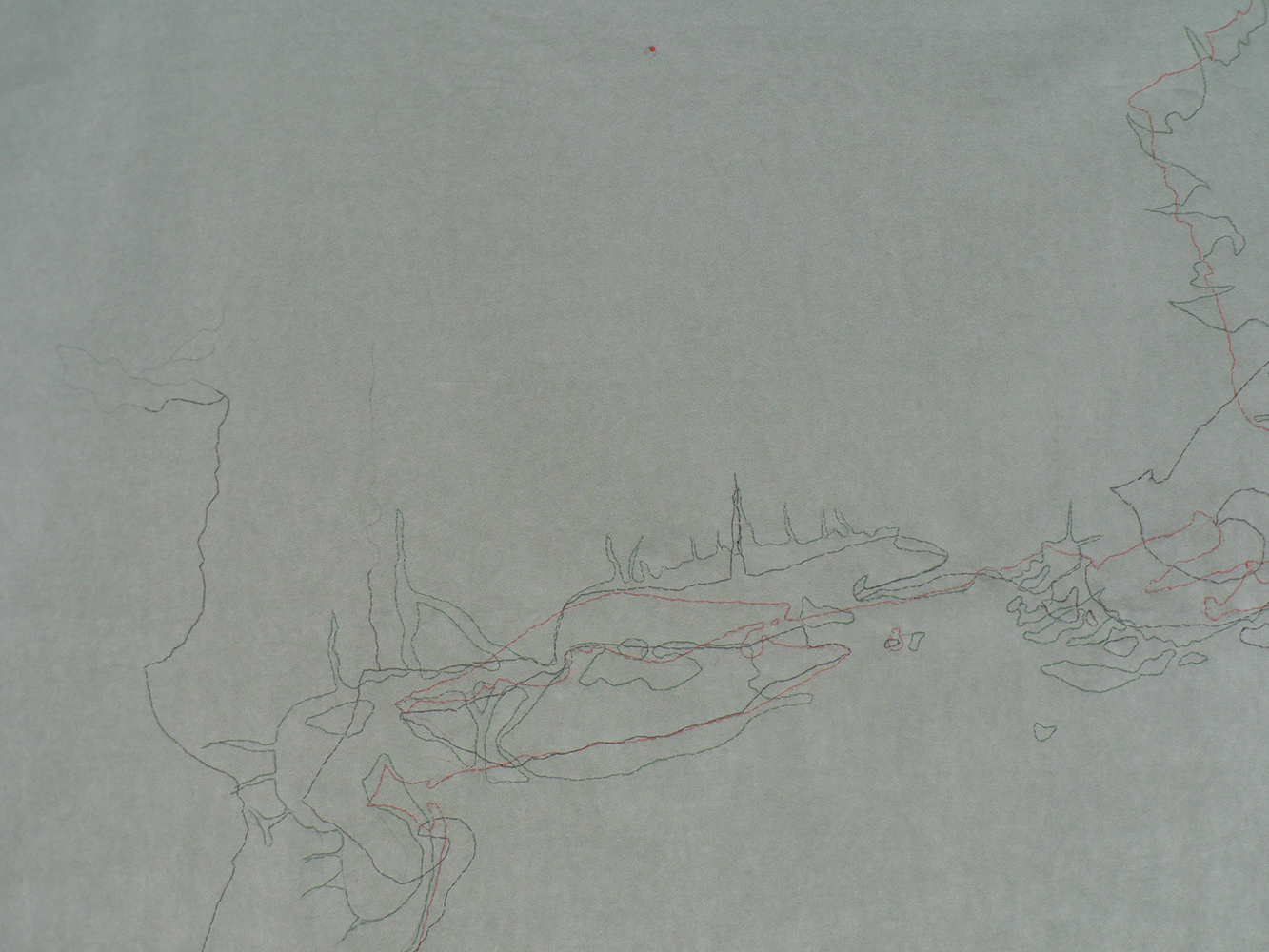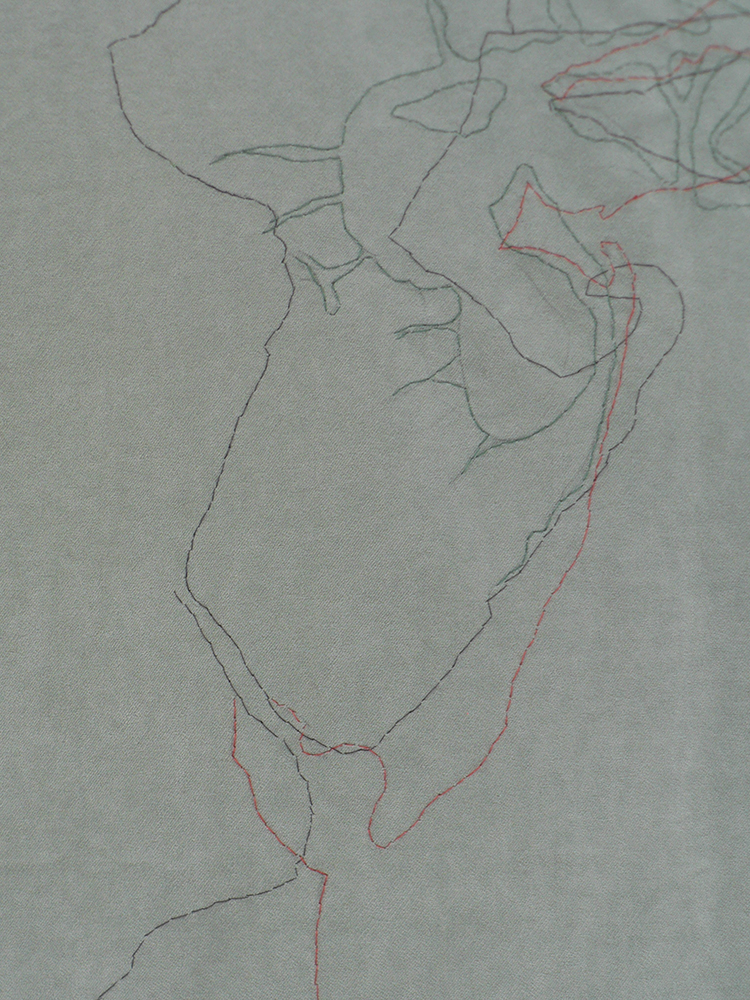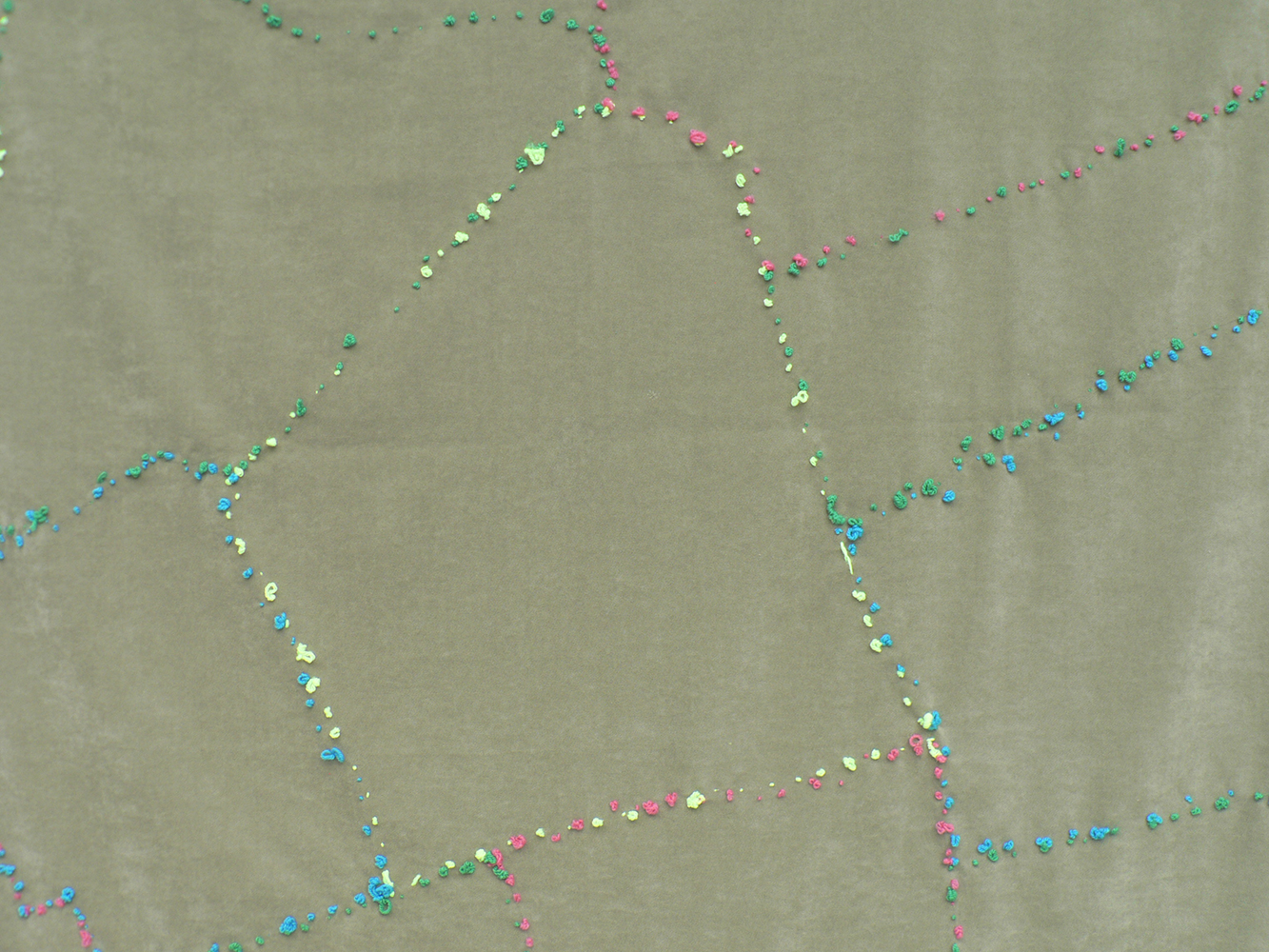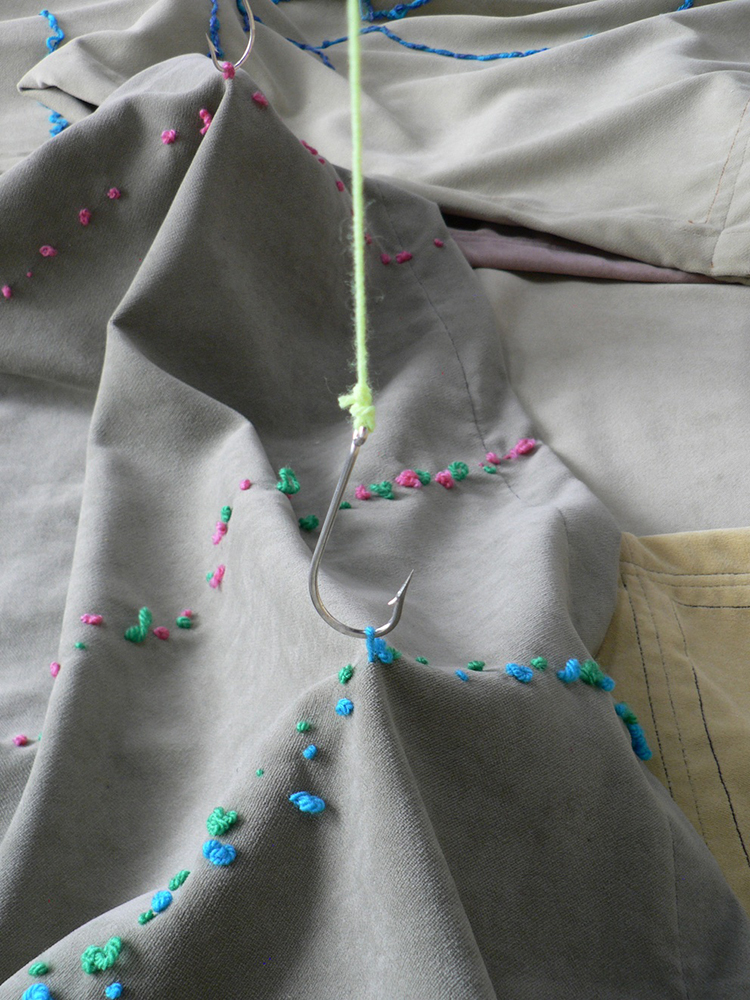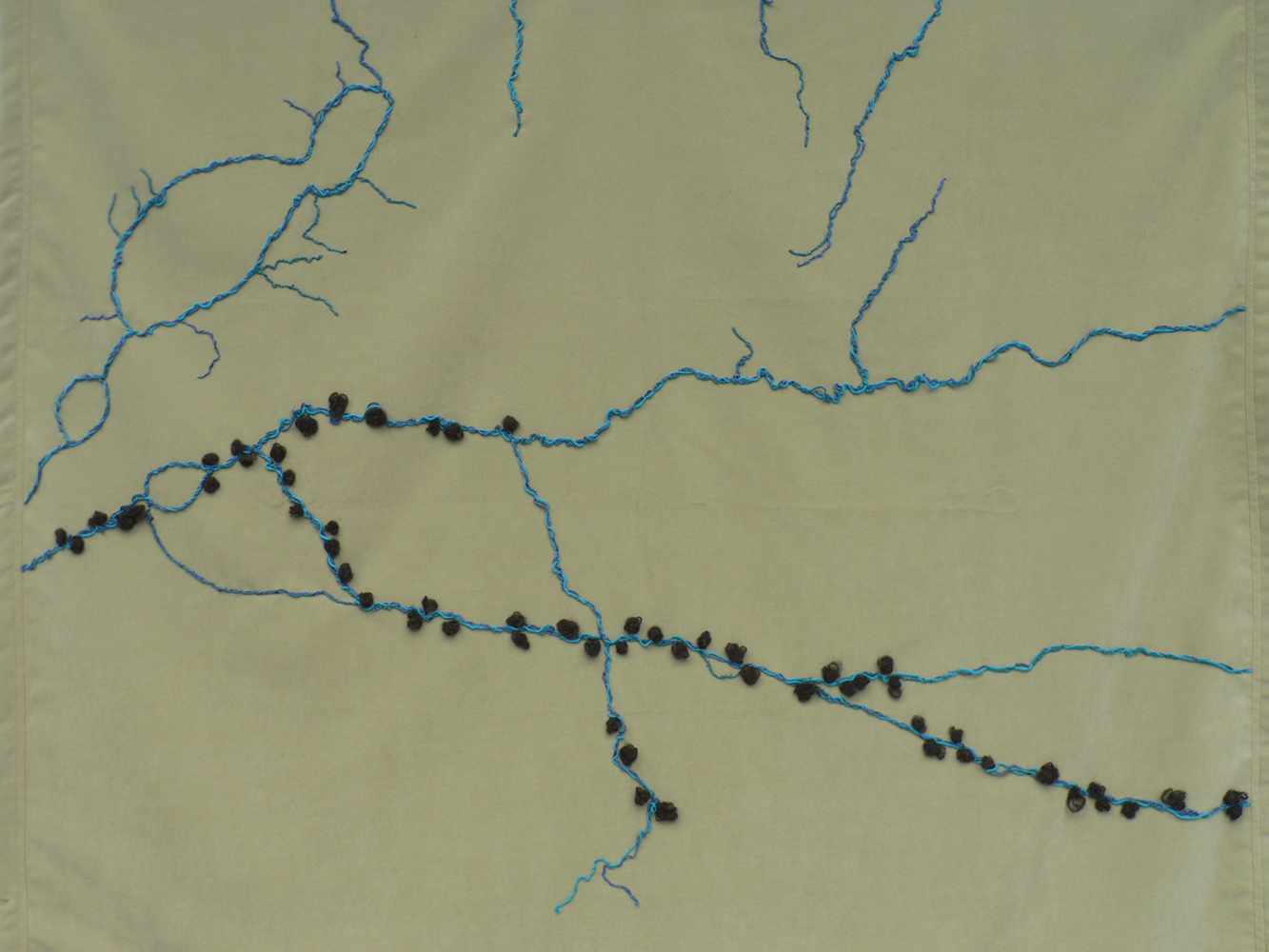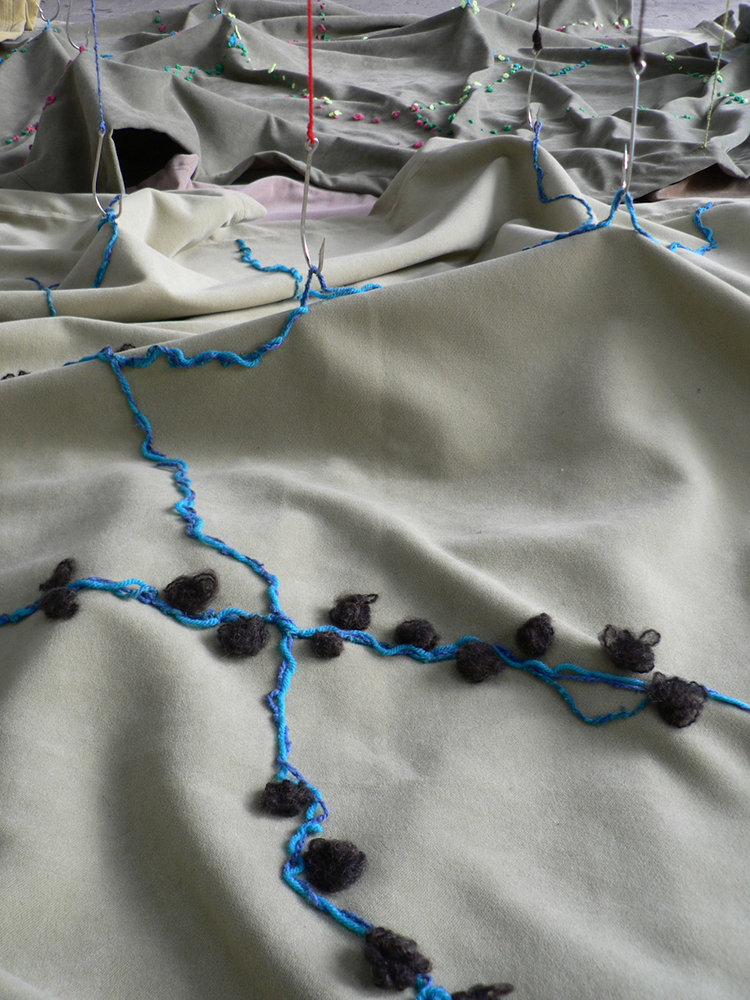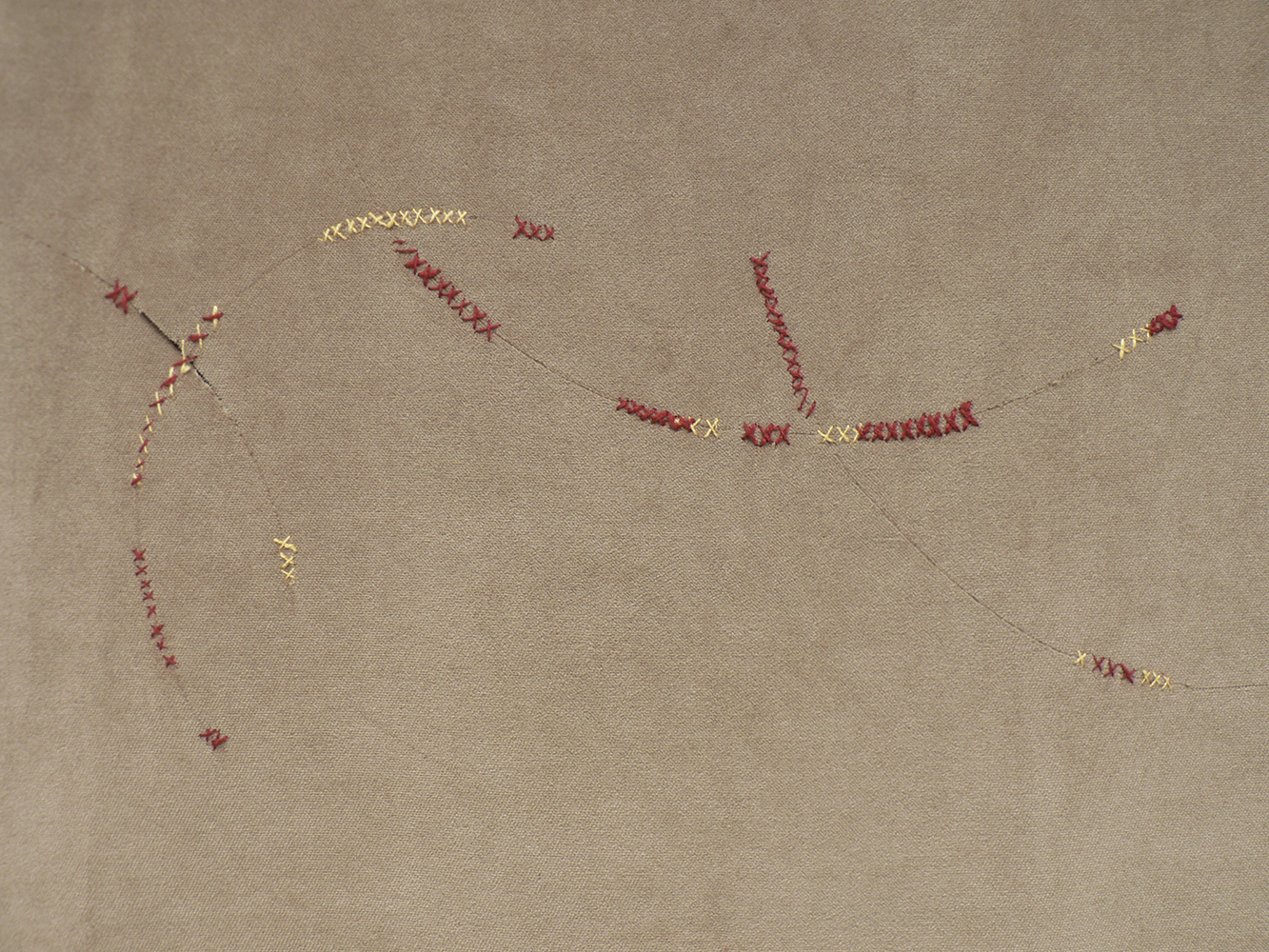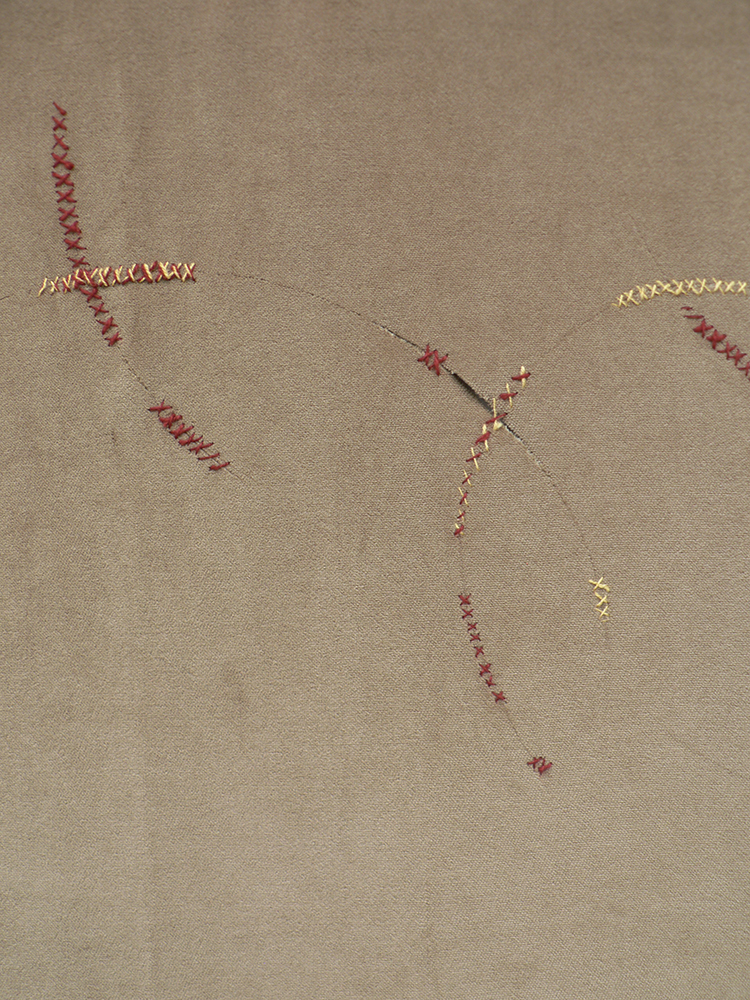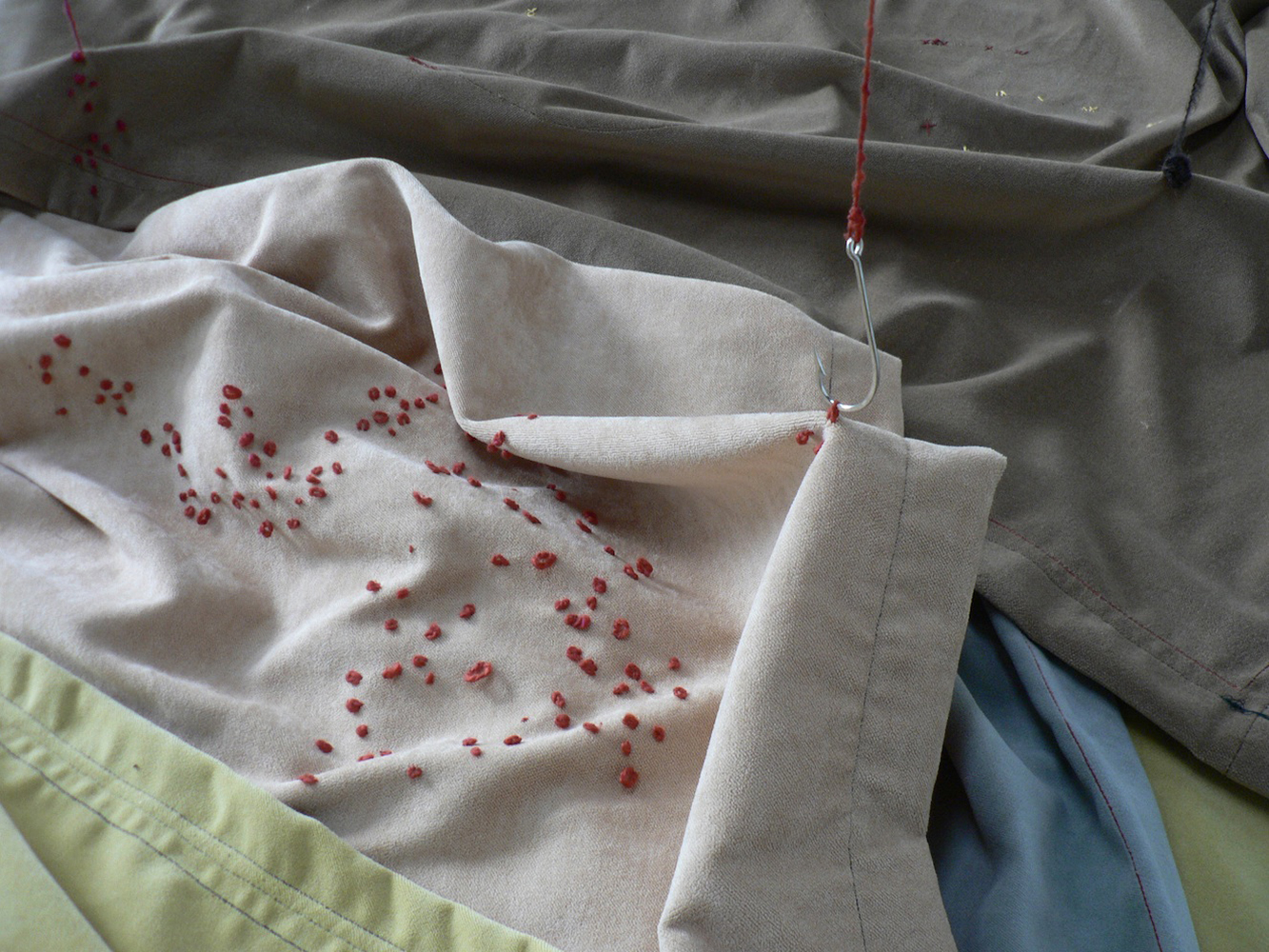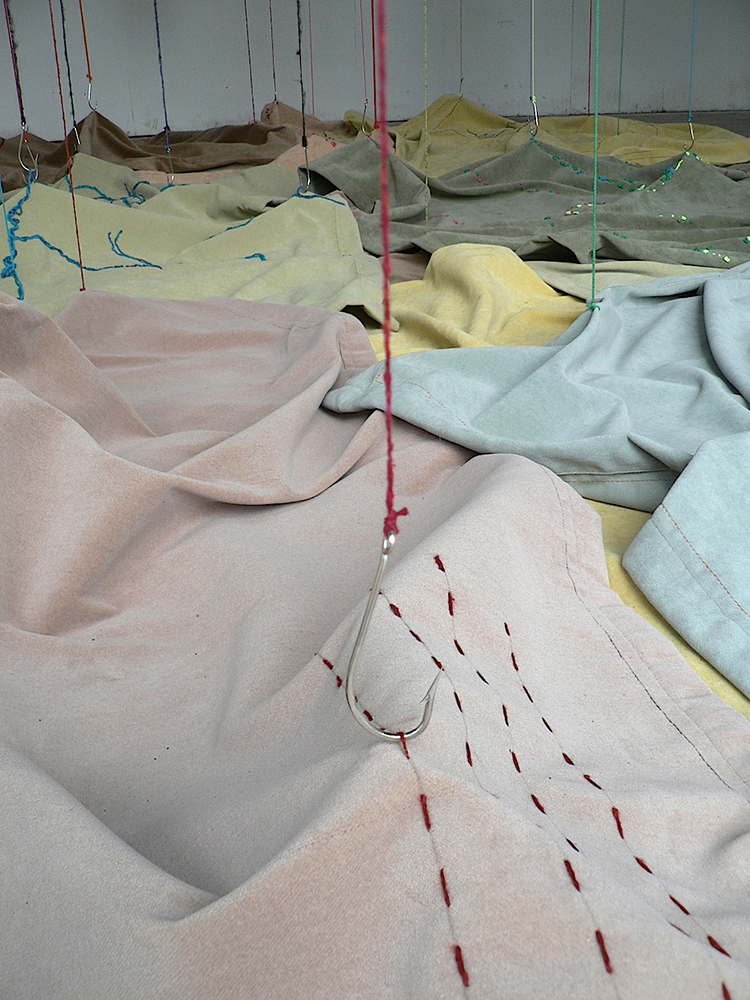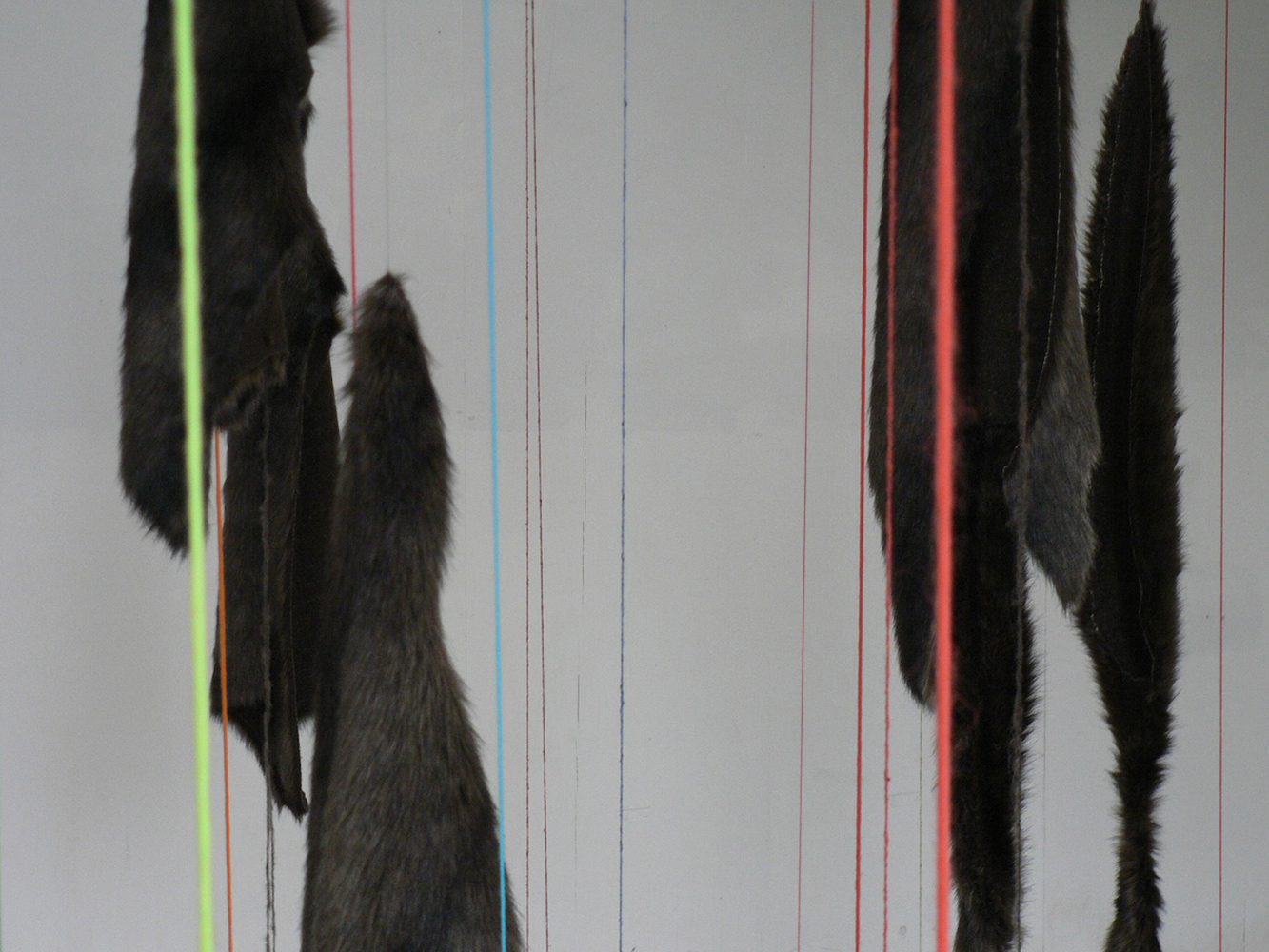From Gent to Ghent, 2013.
Wood, velvet, fake fur, wool, fishing hooks.
Approx. 500 × 250 cm (16 × 8 ft).
Site specific installation, Omi International Arts Center, Ghent, NY, USA, 2013.
In residency at Omi (Ghent, NY), by the means of maps-blankets, fur hats and pelts, I wanted to evoke the relationships between Gent (BE) and Ghent (USA) when the latter was founded in the 17th century, and express the paradox between the beauty and bravery of exploration as well as the violence of colonization and exploitation of the new territories.
Back then Europe had already started to conquer America, bringing along their conflicts — be they economical, religious, political and/or territorial — and engendering new ones in which the Native Indians were consequently brought in. While exploring America, the newcomers discovered a great number of beavers: the fur business became a big source of income and exchanges as well as of wars between America and Europe and between newcomers and Native Indians. It drastically changed the way of life of the latters as they fought for hunting territories and exchanged beaver pelts against wool blankets and metal tools brought in by the Europeans, who in turn fought against one another for territory and borders and to preserve their privileged relationships with some of the Native Indians tribes.
Native Indians and European settlers didn't have the same understanding of property rights.
“Wind, stream, bush, field, sea, beach, and riverside are open and free to everyone of every nation with which the Indians are not embroiled in open conflict. All those are free to enjoy and move about such places as though they were born there.” (Adriaen Van den Donck, 1644, in The Island at the Center of the World, by Russell Shorto)
And when Indians ceded a piece of land to settlers, they believed that, however, they still could use it and obtain the settlers protection when they were in conflict with other Indian tribes.
